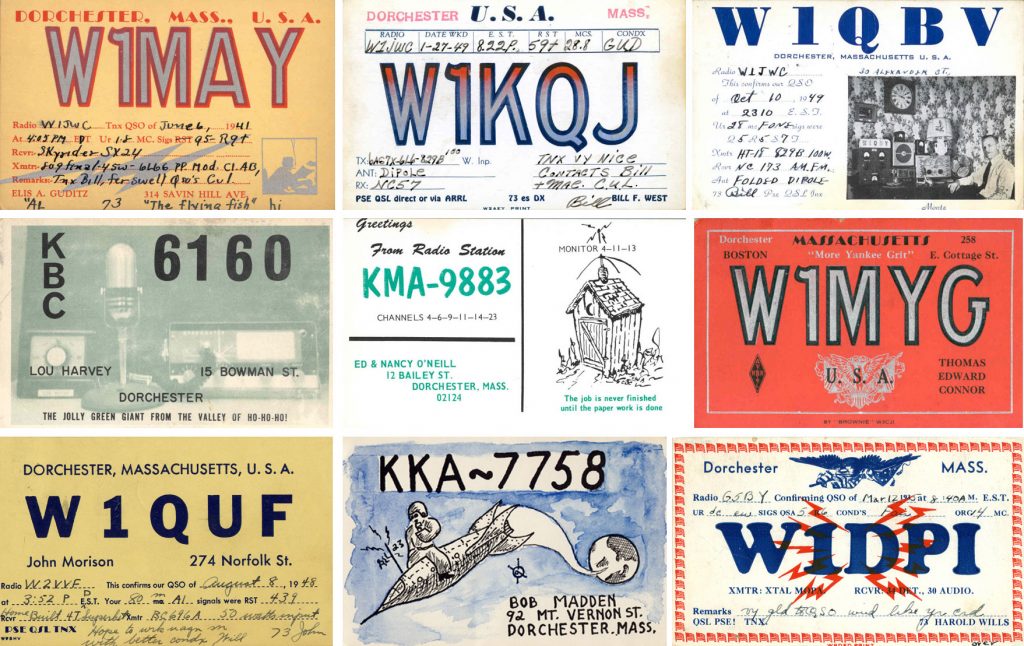
Reminder: the Dorchester Historical Society sales shop is online at www.dorchesterhistoricalsociety.org
You can also give a great gift to yourself or a friend – order a house history for a house in Dorchester or Mattapan. Check it out on the house history page on the Dorchester Historical Society website.
When radio came into American life in the first part of the twentieth century, it opened up communication in a way that was almost unimaginable. In the 1930s and 1940s, residents in Dorchester/Mattapan joined a national craze for communicating through the airwaves at the short end of the spectrum. The small selection of their postcards shown in the illustration testifies to the interest in shortwave broadcasting and receiving, often called ham radio. We don’t know how many operators there are in the neighborhood today, but the ham radio remains popular across the country.
The following is fromhttps://www.hhhistory.com/2015/07/ham-radio-in-1930s.html
During the 1900s, radio (first known as wireless telegraphy) was a new means of communication used by landline telegraphers who left their offices to work on ships or government stations. Soon people who were interested in the new technology started building their own radios. There were no regulations, and many of the amateur stations were very powerful. Two amateurs in a town, communicating with each other, could effectively jam all the other operations in the area.
Frustrated commercial operators referred to the amateurs as “hams.” This was a derogatory term, meant to insult them. But the amateurs embraced the word and made it their own. Many men and boys, and a few women, built radios and became ham operators.
Soon there were too many stations and too few radio frequencies. Amateurs multiplied when vacuum tubes were improved and made cheaper. Then “continuous wave” transmission was invented. This allowed the transmission to concentrate on one wavelength instead of many. Operators began experimenting with shorter waves, and “short wave radio” was born.
In 1927, the government couldn’t ignore radio any longer. They stepped in with regulations. Starting in 1929, all ham operators had to have a license, as well as “call letters” for their station. In 1936, there were 46,000 licensed amateurs in the United States.
During the Great Depression, commercial radio became very popular. Its wide range of live music, comedy, variety shows, and dramatic programming served as a welcome escape from those troubled times. Even though many people were out of work, they desperately struggled to keep up payments on their radios. Amateurs couldn’t put music on their stations. In fact, it was against the law to make any money from their ham radio. But they had their own magazine called QST. The name was derived from the radio Q signal that means “calling all stations.” The magazine has been continuously published since May of 1919. Today they have over 150,000 subscribers.
